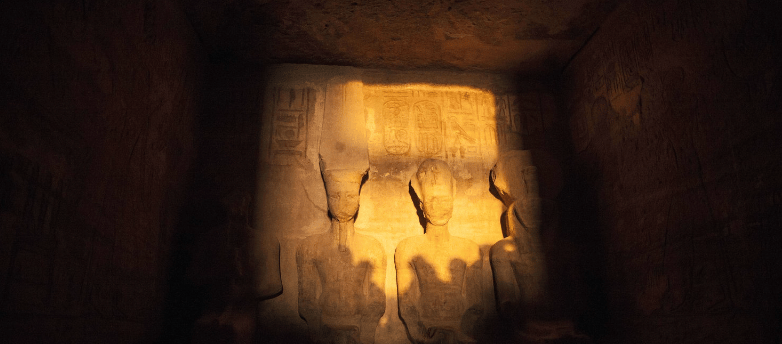The Solar Phenomenon at Abu Simbel: A Twice-Yearly Marvel
TEMPLESGENERAL
2/22/20252 min read


Introduction to the Abu Simbel Temple
The Abu Simbel Temple, constructed during the reign of Pharaoh Ramses II in the 13th century BC, stands as a monumental tribute to the power and endurance of ancient Egypt. This architectural wonder, carved directly into a mountainside, is not only remarkable for its grandeur but also for the fascinating solar phenomenon that occurs within its sacred chambers twice a year.
The Solar Alignment: A Sacred Event
Each year, as the sun rises on two significant days—February 22nd and October 22nd—the light of the sun illuminates the innermost sanctuary of Abu Simbel. This occurrence aligns perfectly with the temples designed purpose, which was to honor the deities inside, primarily the sun god Ra, alongside Ramses II himself. This deliberate alignment showcases the advanced understanding of astronomy possessed by the ancient Egyptians, as well as their deep reverence for the solar forces.
Significance of the Event in Ancient Egyptian Culture
The solar phenomenon at Abu Simbel was not merely a remarkable architectural feat; it held profound cultural significance for ancient Egyptians. The dates on which the sun’s rays penetrate the temple symbolize both the coronation and the birth of Ramses II, reinforcing his divine status and connection to the gods. The alignment also marks the beginning of the agricultural year, which was crucial for the survival of the community. Thus, this event served to unite spirituality and the cyclical nature of agricultural life.
The Modern Day Experience
Today, the solar event attracts tourists from around the world, eager to witness this breathtaking spectacle. Visitors gather at the temple, often arriving before dawn to secure the best spots for viewing the sunrise and the subsequent light show that reveals the intricacies of the temple's carvings. Amidst the awe and inspiration, this ritual continues to evolve, blending the legacy of ancient traditions with modern appreciation.
Conclusion: A Timeless Connection to the Sun
The phenomenon at Abu Simbel Temple remains one of the most extraordinary manifestations of mankind's relationship with celestial bodies. The twice-yearly solar event not only highlights the architectural genius of Ramses II but also reinforces the significant role the sun played in the spiritual and practical lives of the ancient Egyptians. To witness this solar alignment is to connect with a tradition that has endured for millennia, underscoring the timelessness of Egypt's rich heritage.
